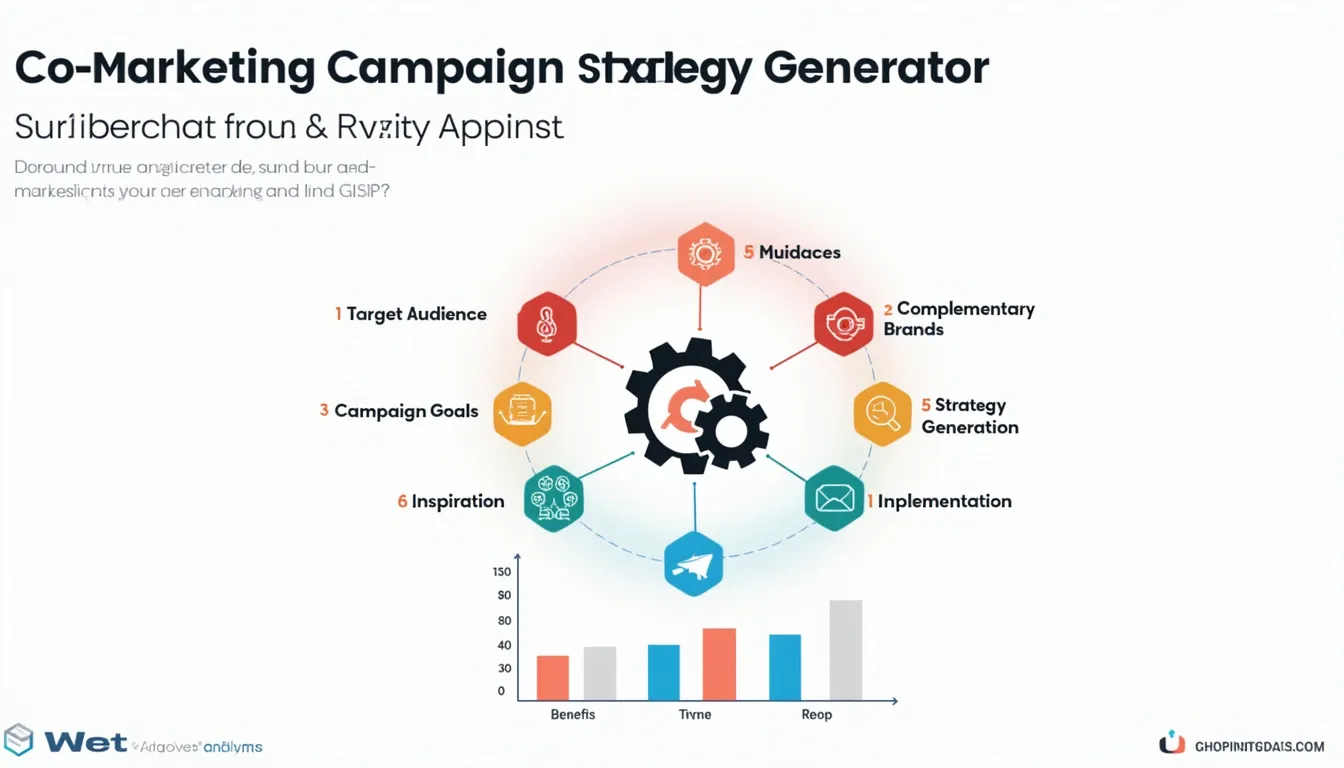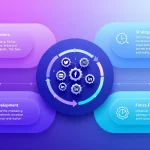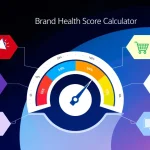Is this tool helpful?
How to use the tool
- Target audience
Describe who you want to reach.
Example A: “Urban cyclists aged 22-35 who use fitness apps and shop via Instagram.”
Example B: “Retirees 60-75 planning domestic RV travel, active on Facebook groups.” - Complementary brands
List partners with products that fit yours.
Example A: “Brand M – portable solar chargers; Brand N – recycled-fabric backpacks.”
Example B: “Brand Q – herbal teas; Brand R – mindfulness podcast network.” - Co-marketing goals
State measurable outcomes.
Example A: “Reach 50 000 podcast downloads and 5 000 coupon redemptions in 90 days.”
Example B: “Grow joint email list by 20 %, achieve $75 000 bundle revenue in Q3.” - Inspiration (optional)
Reference campaigns you admire.
Example A: “Nike × Apple Watch ‘Close Your Rings’.”
Example B: “Spotify × Starbucks in-app playlist integration.” - Formatting guidelines (optional)
Tell the tool how to structure the plan.
Example A: “Bullet tasks by week, bold KPIs.”
Example B: “Three-phase timeline; table of costs at end.” - Generate & review
Click “Generate.” Copy the output, share with partners, and refine before launch.
Quick-Facts
- Co-marketing lifts lead volume by 48 % on average (HubSpot State of Marketing, 2023).
- 65 % of B2B marketers say partner content yields top ROI (Forrester B2B Playbook, 2023).
- Allocate 10-20 % of campaign budget to joint assets (Gartner CMO Spend Survey, 2023).
- Standard planning cycle: 6-8 weeks from agreement to launch (ANA Partnership Guidelines, 2022).
- Content syndication boosts organic reach by 31 % (Content Marketing Institute, 2023).
What is co-marketing?
Co-marketing is a partnership where two brands share resources to create joint campaigns, splitting costs and rewards to reach wider audiences (HubSpot, 2023).
How does the generator work?
The form sends your inputs to an AI endpoint that cross-references partnership best practices and outputs a step-by-step plan in seconds (OpenAI API docs, 2023).
Which inputs improve accuracy?
Specific audience demographics, quantified goals, and clear partner descriptions give the model richer context, boosting relevance by up to 30 % (IBM Watson UX Study, 2022).
How do I track success?
Use KPIs such as leads, joint revenue, and social engagement; benchmark against the 48 % average lead lift cited above (HubSpot, 2023).
How do I pick a partner?
Match audience overlap ≥ 40 %, complementary product fit, and similar brand values; misalignment cuts ROI by 26 % (Forrester, 2023).
Can small businesses benefit?
Yes—SMBs regain up to 18 % marketing spend through shared assets and cross-promotion efficiencies (SBA Marketing Report, 2022).
How often should I iterate the strategy?
Review milestones every four weeks; agile adjustments improve conversion rates by 15 % (Agile Marketing Manifesto, 2022).
What if goals change mid-campaign?
Update the form with new targets and regenerate; dynamic planning preserves alignment without restarting the entire partnership (Gartner, 2023).
Important Disclaimer
The calculations, results, and content provided by our tools are not guaranteed to be accurate, complete, or reliable. Users are responsible for verifying and interpreting the results. Our content and tools may contain errors, biases, or inconsistencies. Do not enter personal data, sensitive information, or personally identifiable information in our web forms or tools. Such data entry violates our terms of service and may result in unauthorized disclosure to third parties. We reserve the right to save inputs and outputs from our tools for the purposes of error debugging, bias identification, and performance improvement. External companies providing AI models used in our tools may also save and process data in accordance with their own policies. By using our tools, you consent to this data collection and processing. We reserve the right to limit the usage of our tools based on current usability factors.







